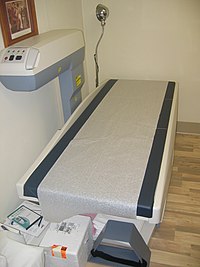
Effects of epicardial adipose tissue volume and density on cardiac structure and function in patients free of coronary artery disease
Sign Up to like & getrecommendations! Published in 2020 at "Japanese Journal of Radiology"
DOI: 10.1007/s11604-020-00951-3
Abstract: Purpose To determine the association of epicardial adipose tissue (EAT) volume and density with cardiac geometry and function. Methods We included 178 consecutive patients who performed coronary computed tomography angiography but were not diagnosed with… read more here.
Keywords: volume; eat volume; volume density; density ... See more keywords

Epicardial adipose tissue is associated with the formation of left ventricular aneurysm after myocardial infarction
Sign Up to like & getrecommendations! Published in 2020 at "European Heart Journal"
DOI: 10.1093/ehjci/ehaa946.1799
Abstract: Left ventricular aneurysm (LVA), a serious complication of transmural myocardial infarction, is generally related to poor cardiovascular outcomes. The formation of LVA is essentially an inflammatory remodeling process regulated by multiple systemic and local factors.… read more here.
Keywords: myocardial infarction; eat volume; eat; lva ... See more keywords

The Relationship between Enhancing Left Atrial Adipose Tissue at CT and Recurrent Atrial Fibrillation.
Sign Up to like & getrecommendations! Published in 2022 at "Radiology"
DOI: 10.1148/radiol.212644
Abstract: Background The association of epicardial adipose tissue (EAT) and its metabolic activity with atrial fibrillation (AF) is an area of active investigation. Left atrial (LA) enhancing EAT (e-EAT) at cardiac CT may be a noninvasive… read more here.
Keywords: eat; volume; eat volume; adipose tissue ... See more keywords

Relation between quantity and quality of peri-coronary epicardial adipose tissue and its underlying hemodynamically significant coronary stenosis
Sign Up to like & getrecommendations! Published in 2020 at "BMC Cardiovascular Disorders"
DOI: 10.1186/s12872-020-01499-w
Abstract: Background We aimed to investigate the association of lesion-specific epicardial adipose tissue (EAT) volume and density with the presence of myocardial ischemia. Methods We enrolled 45 patients (55 lesions) with known or suspected coronary artery… read more here.
Keywords: ischemia; eat volume; lesion specific; lesion ... See more keywords

Cardiac computed tomography-derived epicardial fat volume and attenuation independently distinguish patients with and without myocardial infarction
Sign Up to like & getrecommendations! Published in 2017 at "PLoS ONE"
DOI: 10.1371/journal.pone.0183514
Abstract: Background and objective Epicardial adipose tissue (EAT) volume is associated with coronary plaque burden and adverse events. We aimed to determine, whether CT-derived EAT attenuation in addition to EAT volume distinguishes patients with and without… read more here.
Keywords: myocardial infarction; eat volume; attenuation; volume ... See more keywords

Left atrial epicardial adipose tissue is associated with low voltage zones in the left atrium in patients with non-valvular atrial fibrillation
Sign Up to like & getrecommendations! Published in 2022 at "Frontiers in Cardiovascular Medicine"
DOI: 10.3389/fcvm.2022.924646
Abstract: Objective Epicardial adipose tissue (EAT) is related to atrial fibrillation (AF), but the specific mechanism is still unclear. Left atrial (LA) low voltage zones (LVZ) can well reflect atrial fibrosis. This study investigated the relationship… read more here.
Keywords: attenuation; eat; epicardial adipose; eat volume ... See more keywords

Epicardial Adipose Tissue and Cardiovascular Risk Assessment in Ultra-Marathon Runners: A Pilot Study
Sign Up to like & getrecommendations! Published in 2021 at "International Journal of Environmental Research and Public Health"
DOI: 10.3390/ijerph18063136
Abstract: Epicardial adipose tissue (EAT) volume is associated with cardiovascular disease (CVD). Data regarding the influence of extremely intensive training on CVD are scarce. We compared EAT volume among ultra-marathon runners and in the sedentary control… read more here.
Keywords: epicardial adipose; risk; eat volume; group ... See more keywords